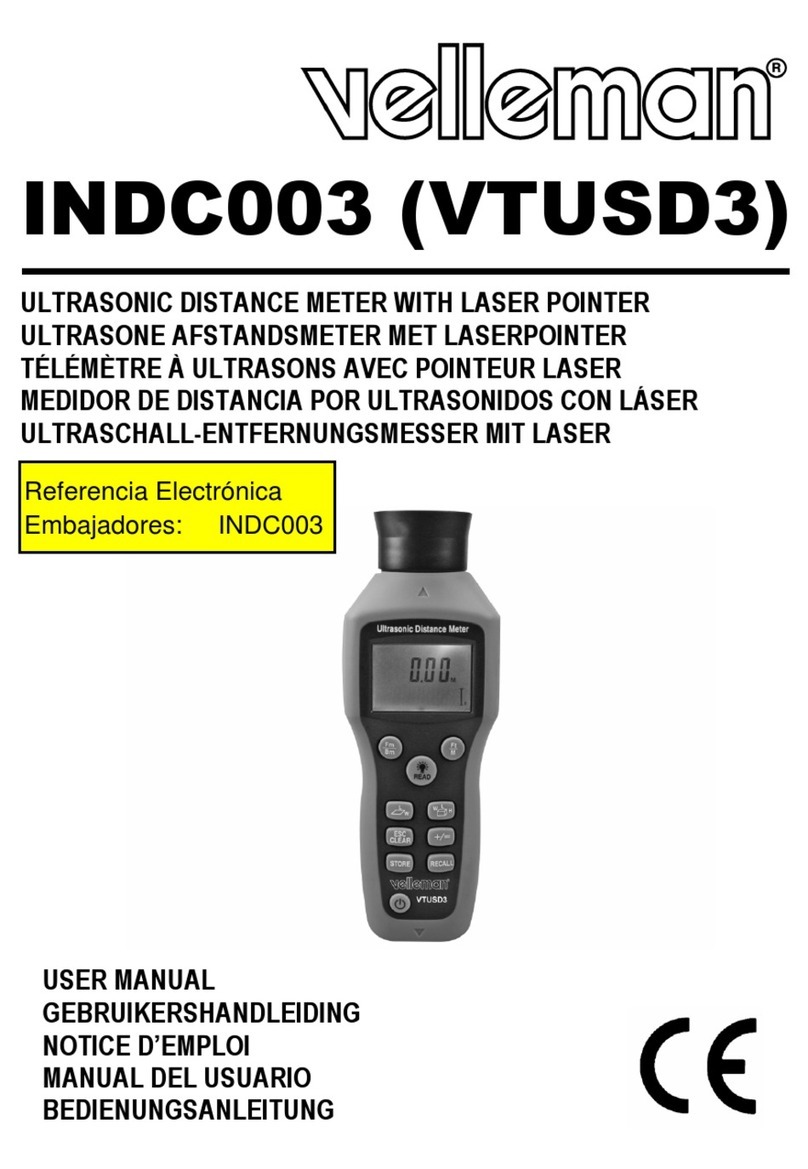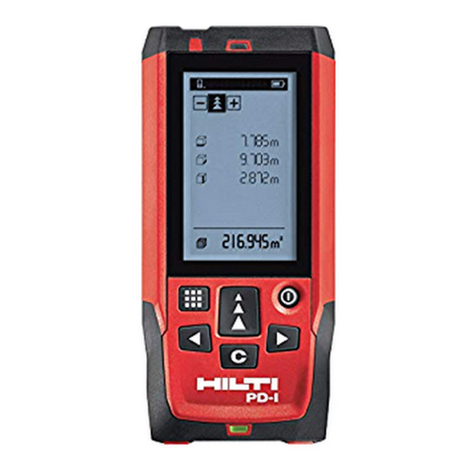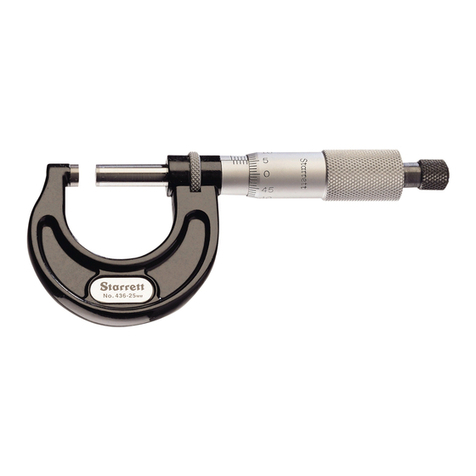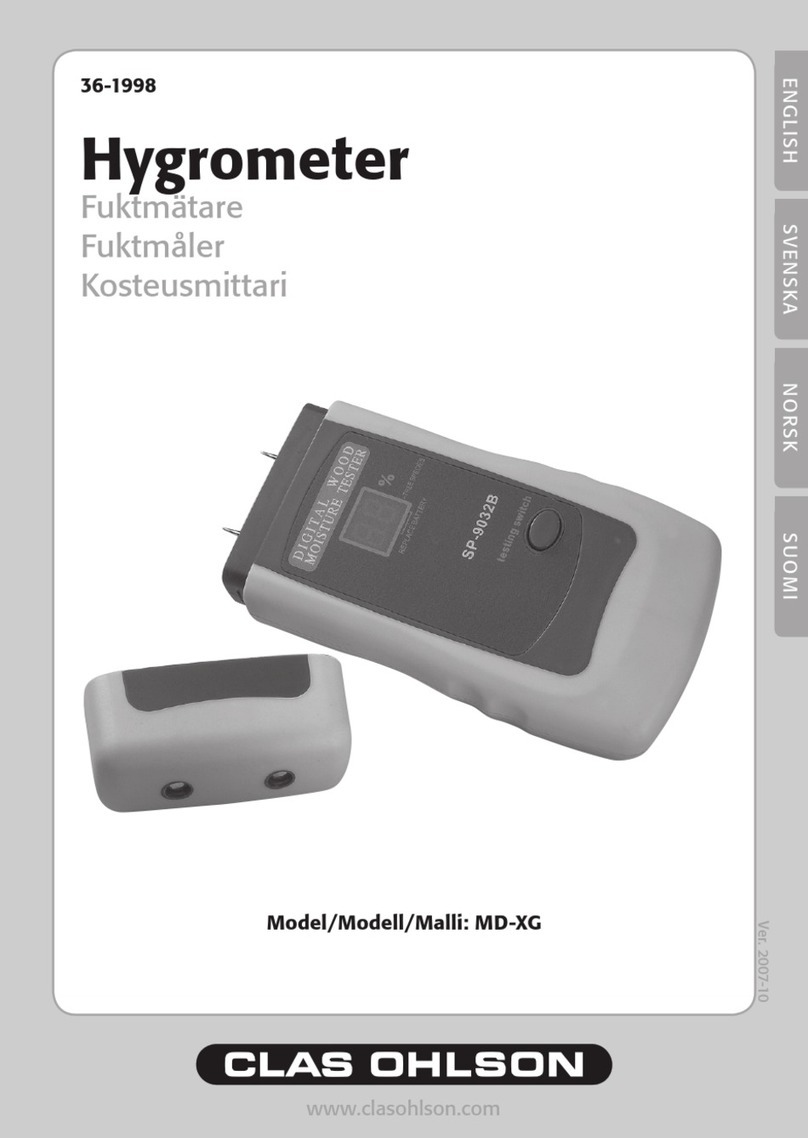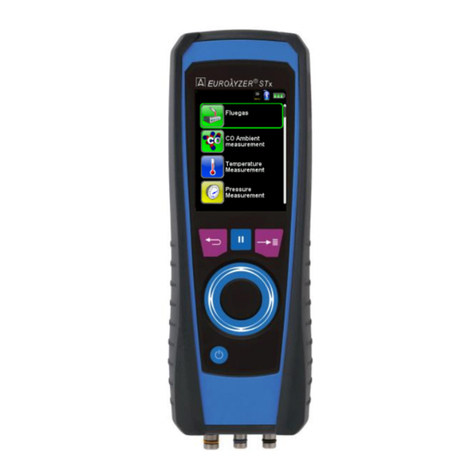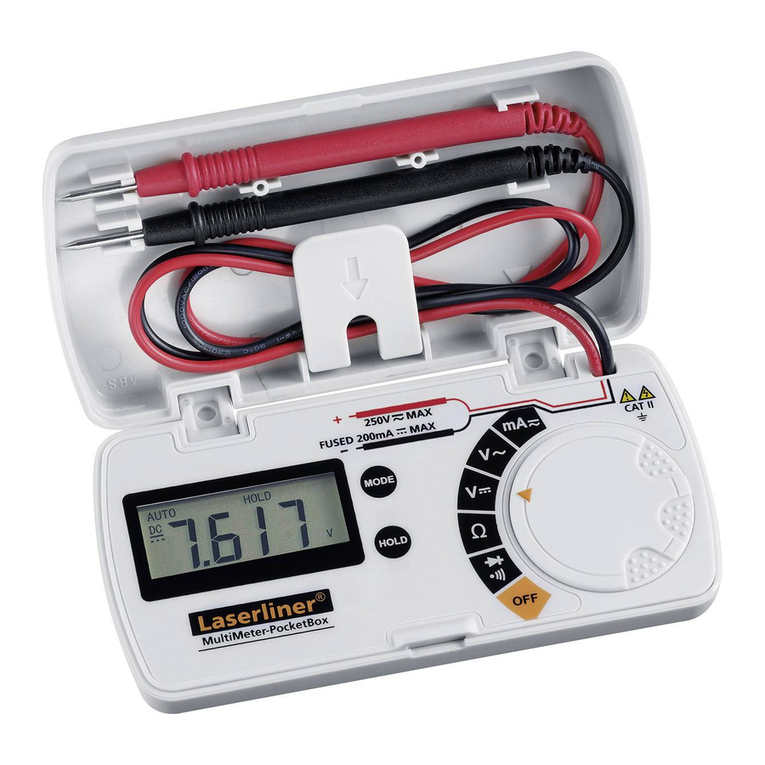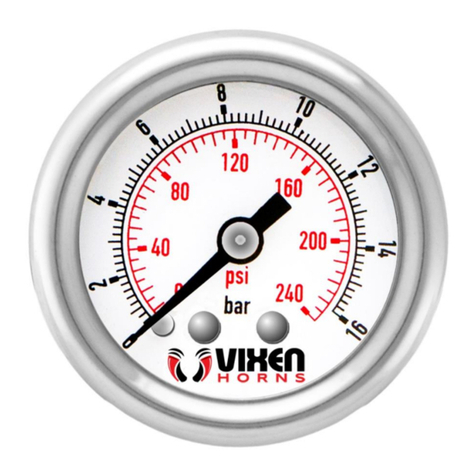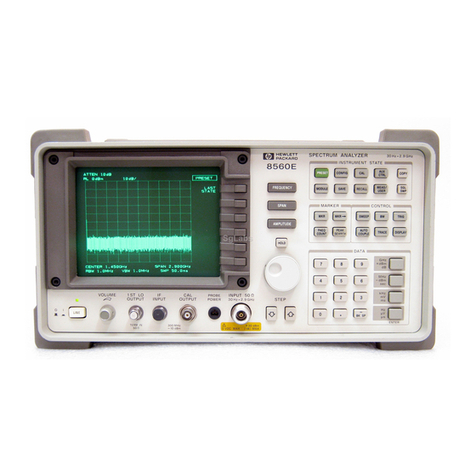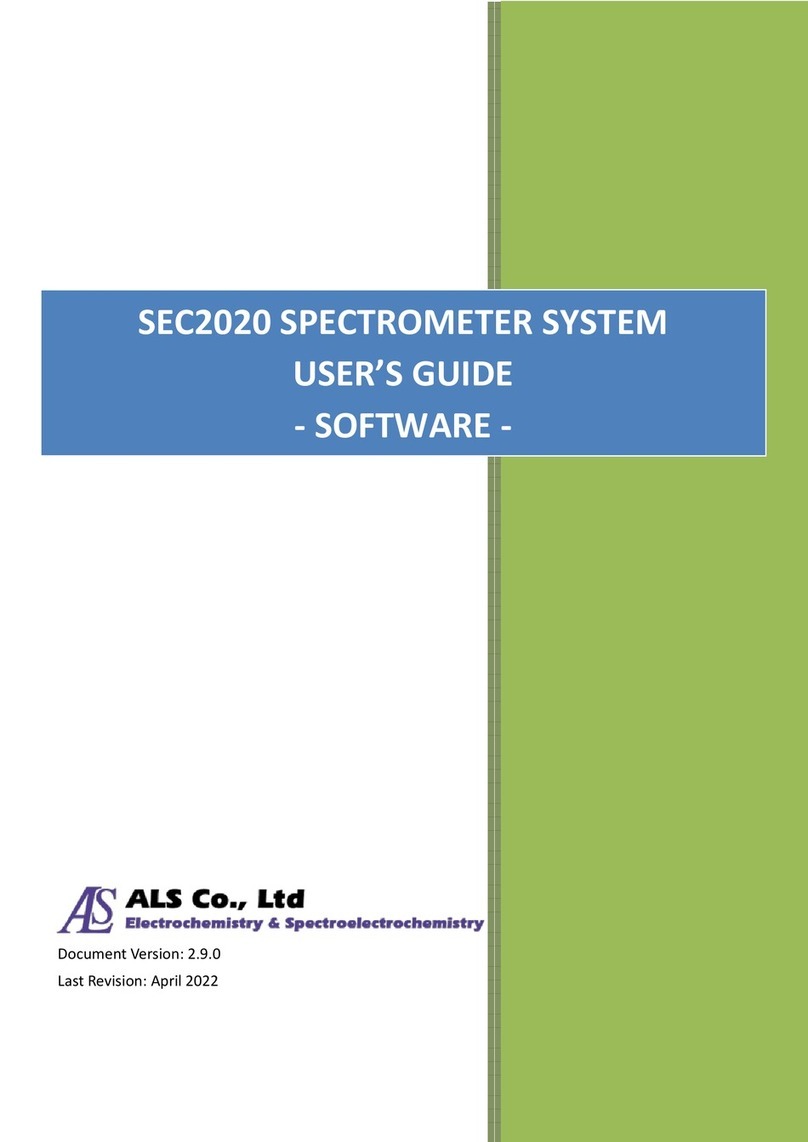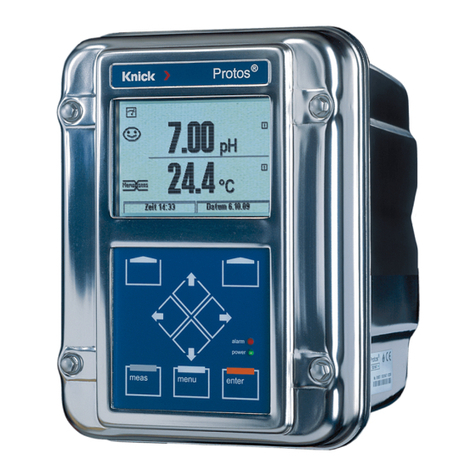Interscience COMPACTGC User manual

COMPACTGC
Instruction manual
version 2.01 (January 2005)

CompactGC manual
ii
CompactGC Instruction Manual
January 2005 Edition
© 2005 Interscience B.V., The Netherlands. All rights reserved.
Published by Interscience B.V., The Netherlands, P.O. Box 2148, 4800 CC Breda
Tel: +31 76 5411800 Fax: +31 76 5420088
Printing History: First Edition, version 1.04, released July 2003
Second Edition, version 2.01, released January 2005
Disclaimer
Technical Information contained in this publication is for reference purposes only and is subject to change
without notice. Every effort has been made to supply complete and accurate information; however,
Interscience B.V. assumes no responsibility and will not be liable for any errors, omissions, damage, or loss
that might result from any use of this manual or the information contained therein (even if this information is
properly followed and problems still arise).
This publication is not part of the Agreement of Sale between Interscience B.V. and the purchaser of a
CompactGC system. In the event of any conflict between the provisions of this document and those
contained in Interscience B.V. Terms of Delivery, the provisions of the Terms of Delivery shall govern.
Reference to System Configurations and Specifications supersede all previous information and are subject
to change without notice.
Trademarks
CompactGC is a trademark of Interscience B.V. Other brand and product names may be trademarks or
registered trademarks of their respective companies.
Valco® valves is a registered trademark of Valco Instruments Co. Inc. and Valco International.
EZChrom® is a trademark of Scientific Software, Inc.

CompactGC manual
iii
Manufacturer: Interscience B.V.
Interscience B.V. is the manufacturer of the instrument described in this manual and, as such, is responsible
for the instrument safety, reliability and performance only if:
• installation
• re-calibration
• changes and repairs
have been carried out by authorized personnel and if:
• the local installation complies with local law regulations
• the instrument is used according to the instructions provided and if its operation is only entrusted to
qualified trained personnel. The CompactGC should be handled as described in the pre-installation guide
“Gaschromatografiesystemen”.
Interscience B.V. is not liable for any damages derived from the non-compliance with the aforementioned
recommendations.
Interscience B.V.
Postbus 2148
4800 CC BREDA
The Netherlands
tel: 076-5411800
fax: 076-5420088
www.interscience.nl
info@interscience.nl

CompactGC manual
1
Table of contents
1. Safety 2
2. Installation 4
3. Instrument description 7
3.1 Digital gas supply 8
3.2 Valve oven 10
3.3 Column oven 10
3.4 Detectors 11
4. Pre-concentration Module (PM) 16
5. The CompactGC editor program 17
Command buttons 18
Tab pages 19
Pull down menu’s 22
6. Operation 28
6.1 Column installation 28
6.2 Leak check 30
6.3 Quick start up 31
7. Maintenance and troubleshooting 33
Appendix 1: EZChrom®/ EZStart®settings 34
Appendix 2: Electrical connenctions 39
Appendix 3: LED status display 41
Index

CompactGC manual
2
1. Safety
Safety summary
The following general safety precautions must be observed during all phases of
operation, service, and repair of this instrument. Failure to comply with these
precautions or with specific warnings elsewhere in this manual violates safety standards
of design, manufacture, and intended use of this equipment. Interscience assumes no
liability for the customer’s failure to comply with these requirements.
Ground the instrument
To minimize shock hazard, the instrument chassis and cabinet must be connected to an
electrical ground, using the provided three-pin AC power cable.
Do not operate in an explosive atmosphere
Do not operate the instrument in the presence of flammable gasses or fumes.
Operation of any electrical instrument in such an environment constitutes a definite
safety hazard. Contact your supplier for purged housings if the CompactGC needs to
be applied in an EX classified zone.
Keep away from live circuits
Analytical column and component replacement and internal adjustments must be
made by qualified maintenance personnel. Do not replace components with the
power cable connected. Under certain conditions, dangerous voltages may exist even
with the power cable removed. To avoid injuries, always disconnect power and
discharge circuits before touching them.
Do not service or adjust alone
Do not attempt internal service or adjustment unless another person, capable of
rendering first aid and resuscitation, is present.
Do not substitute parts (electronics)
Because of the danger of introducing additional hazards, do not install substitute parts
or perform any unauthorized modification of the instrument. Contact Interscience
Services to ensure that safety features are maintained.
Do not over-pressurize the instrument
See ‘installation’ for maximum allowed pressures.

CompactGC manual
3
Hot surfaces should be avoided
The CompactGC has heated inlets. Contacting these inlets once they are at operating
temperatures can result in injury.
The use of hydrogen
The use of hydrogen for feeding the flame in certain types of detectors requires the
operator’s extreme attention and the compliance with special precautions due to the
hazards involved in the use of this gas. Moreover, the operator shall be present while
analyses are run to immediately detect any malfunctioning. Hydrogen is a dangerous
gas (when mixed with air it may generate an explosive mixture), particularly when, in a
closed area, it reaches a concentration corresponding to its lower level of explosion
(4% in volume). For these reasons, before using hydrogen, the following
recommendations must be observed:
1. Ensure that all hydrogen cylinders are complying with the safety conditions provided
for their proper use and storage: they must be equipped with suitable safety valves,
automatic safety systems and all that is required by current regulations even with
regard to safety in sites with danger of explosion or fire.
2. During the connection of hydrogen lines, ensure that the gas feeding inlet is
perfectly closed.
3. Before using the instrument, ensure that the lines designed for hydrogen are
perfectly leak-tight.
According to the results obtained, it will be possible to inspect each single section of
the pneumatic circuit as pointed out in said paragraph. Should it be necessary to
operate in the inside of the pneumatic compartment or column oven, the check shall
be carried out with all circuits under pressure. This procedure shall be repeated until all
causes of leakage have been eliminated.

CompactGC manual
4
2. Installation
Instrument classification
The instrument classification is according to IEC 10.10:
•internal use
•temperature 18 to 30 °C
•maximum relative humidity between 50 % and 80 %
•transient overload in compliance with installation categories II
•pollution level according to IEC 664 (3.7.3) 2
Space requirements
The CompactGC measures approximately:
Width : 45.0 cm (without 19” mounting handles)
Height : 17.8 cm (4HE; 18.5 cm including sockets)
Depth : 54.0 cm (including handles)
Weight : depending on configuration, approximately 25 kg
The unit can be placed on a bench, or can be mounted in a standard 19” rack. For
installation of the analytical column and for service, the instrument is accessed by
removing the top cover.
Ventilation
Depending on the configuration and operation parameters, sufficient ventilation must
be available for cooling purposes.
Gasses
Connections
All gas connections are 1/16” Swagelok, except for the actuator gas (1/8”).
Pressure
The maximum pressure for all gasses is 500 kPa. For carrier- and detector gas, 300
kPa is recommended. For fastest valve switching, helium is recommended for
actuator gas, but air can also be applied (350 kPa).
In case of the PDD (Pulsed Discharge Detector), the discharge gas is directly
connected to the Helium supply via an internal restrictor. A stable 350 kPa He
pressure is needed for this application.
Quality
For carrier gas, He 5.0 (N50) is recommended.

CompactGC manual
5
Demand
Carrier gas: 2-50 ml/min for each analysis channel, depending on settings
TCD: 2 ml/min (reference gas)
FID: 30 ml/min H2; 300 ml/min air
PDD: 30 ml/min He
PID 2 ml/min make-up
Power requirements
The CompactGC requires 220/230V single phase voltage, 50 Hz. With all options
installed, the maximum power consumption is 900 VA. In practice, depending on the
configuration, the typical power assertion is much lower.
Digital connections
CompactGC Editor
This 9-pole connection is used for RS-232 communication for parameter
programming and status readout. Maximum (tested) length is 10 m.
EZChrom® / EZStart®
This RS-232 connection is used for the digital detector data in case of the
EZChrom®/ EZStart ®data system. Maximum (tested) length is 10 m.
Wherever in this manual is spoken about EZChrom®, it is also applicable
for EZStart®.
Note that in case of the EZChrom®data system, two RS 232
connections are needed.
Digital output
The GC-ready and GC-Start-out signals are available on this connector. (Start-
out is used to start the data system in case of analog data signal). The
programmable output bits are also present on this connector. See appendix 2 for
more details.
Digital input
Via this connector, the CompactGC can be started and stopped by remote
control hardware signals. See appendix 2 for more details.
Figure 2.1 is showing the electrical and pneumatic connections.

CompactGC manual
6
Mains switch
220V power
connection
EZChrom
RS 232 connector
(D sub 9 pole)
CGC Editor
RS 232 connector
(D sub 9 pole)
Digital output
(D sub 15 pole)
Flash
programming
Split out
(1/16” Swagelok)
Carrier gas in
(1/16” Swagelok) Detector gas in
1/16” Swagelok) Detector out
(1/16” Swagelok)
Actuator He-Air
(1/8” Swagelok)
Digital input
(D sub 15 pole)
Figure 2.1: electrical and pneumatic connections

CompactGC manual
7
3. Instrument description
The CompactGC is a fully digital 19” rack GC, dedicated for fast gas analysis (however
analysis of liquid samples is also possible). The instrument uses reliable well-known
technique like Valco®valves, robust detectors and standard available capillary
columns with down sized dimensions, to obtain short analysis times. Typical analysis
times are 10 seconds to 2 minutes. The CompactGC editor, a dedicated program for
method programming, sets all parameters. The CompactGC is an up to 3-channel
instrument, with a choice of four different detectors. The signal of the detectors is
available in digital format, for use with the EZChrom®data systems, as well in analog
form for connection to other data systems. The basic setup of the system is shown in
figure 3.1.
valve
oven
column
oven
detectors
power
supply
digital
gas
control
detector
electronics
Figure 3.1: Basic system

CompactGC manual
8
The front half of the instrument contains the ‘chromatography hardware’: on the right
side the valve oven for (maximum 3) heated valves, in the middle the isothermal
column oven(s) (maximum 3), on the left side the detector compartment, for up to 3
detectors. A module for cryogenic trapping, in case of trace gas analysis, can be
installed in place of one of the column ovens.
On the back half of the instrument, from right to left side, the power supply, the digital
gas supply, and detector controllers can be seen.
3.1 Digital gas supply
The gas control of the instrument is fully digital, and can be present in two types of
modules:
•Carrier Gas Module (CGM) for carrier gas
•Detector Gas Module (DGM) for detector gasses
CGM
The Carrier Gas Module is a sophisticated carrier gas supply device, which can be
operated in the following modes:
•Constant pressure
•Programmed pressure
•Pressure pulse (pressure surge)
Four different gasses can be used: helium, hydrogen, nitrogen and argon. In case of
change of carrier gas type, recalibration of the splitflow is needed. Contact your
service organization for more information. Hydrogen is not recommended for safety
reasons.
Constant pressure
The most common used operating mode is constant pressure, with digital control of the
split flow. See figure 3.2.
In this diagram, the constant pressure is obtained by the upper proportional valve and
pressure sensor (P). The lower proportional valve and pressure sensor, in combination
with a temperature compensated restrictor are controlling the split flow.
Normally, the optimum flow for a certain type of column is the starting point of method
development. The needed pressure can be determined by measuring the flow on the
detector outlet, of can be calculated using the available flow calculator (CGC editor).

CompactGC manual
9
Figure 3.2: Diagram CGM
Programmed pressure, pressure surge
These modes of carrier gas control are obtained by programming the targeted
parameters using the Run Time Table. See chapter 5 for more details.
If the CompactGC runs out of carrier gas (no inlet supply), the system switches to the
Hibernate mode (all flow and temperature channels are set to value 0) and cools
down.
The GC needs a reboot (mains power switch, or ‘warm reset’ from the CGC editor
menu) to return to normal operation.
DGM
The second type of digital gas supply contains two pressure channels, and is therefore
used to control two detector gasses, f.i. hydrogen and air in case of FID, or two
reference gasses in case of double TCD. In combination with a calibrated, temperature
compensated restrictor in the module, constant detector gas flows are obtained. See
figure 3.3. The flows needed for proper detector operation are entered using the CGC
editor program.

CompactGC manual
10
Figure 3.3: Diagram DGM
3.2 Valve oven
The valve oven is an independent heated temperature compartment that provides:
•housing for maximum 3 Valco®valves, for several configurations like injection,
backflush, streamselection, etc.
•heated sample inlet
•housing for sample conditioning (filtering, pressure reducing, etc.)
The oven can easily be accessed for maintenance, injection-loop changing, etc.
3.3 Column oven
In the CompactGC, up to three column ovens can be installed. In order not to lose
analysis time compared to a temperature programmed run (cooling down phase), the
analysis conditions are normally developed on base of isothermal analysis. Therefore
the applied ovens are isothermal and highly stable. The three ovens have independent
temperature control, so each column operates at its optimum temperature. The
standard supplied oven is used for fused silica columns with an internal diameter of 0.32
mm maximum. For wide-bore columns (0.53 mm id), metal columns are advised. The
most common used columns are 2-15 meter/0.32 mm id fused silica. In the oven,
columns with a winding diameter of 8 cm are installed. These columns can be ordered
in this dimension, but also standard columns are used, after rewinding them to the
mentioned diameter. See chapter 6.1 for column installation.
Ovens for packed columns are available on request.
TCD 1 out
capillary column 1
TCD
TCD front
detector gas in
detector gas in (second detector)
PPM
PPressure
sensor
proportional
valve 1 Fixed
restrictor
(temperature
compensated)
P

CompactGC manual
11
3.4 Detectors
Four detectors are available: Thermal Conductivity Detector (TCD), Flame Ionisation
Detector (FID), Pulsed Discharge Detector (PDD) and Photo Ionisation Detector (PID)
(available end 2003). Up to three of these detectors can be configured in the
CompactGC.
TCD
The TCD is a very widely used detector for analysis of gases, but in principle all
components with different thermal conductivity in relation to the carrier gas can be
detected. The response is concentration dependant: a higher column flow or make-up
flow results in a decreased sensitivity.
This detector is a dual channel microvolume cell with two filaments on constant mean
temperature. See figure 3.4.
Figure 3.4: TCD detector
Operation principle
The filaments are continuously losing heat to the wall of the detectorcell by the thermal
conducting carrier gas (see figure 3.5). When a component with a different thermal
conductivity compared to the carrier gas passes the filament, the electronic circuit in
which both filaments are integrated (Wheatstone bridge) is adjusting the current to
maintain the constant filament temperature. This current change is dependant on the
component concentration, and is converted to a chromatographic signal that can be
handled by the data system.
analysis flow reference flow
dual filaments

CompactGC manual
12
Figure 3.5: Principle of the TCD
The reference flow is supplied by a Detector Gas Module (DGM), and this flow is also
used for make-up gas according figure 3.5. This results in a better peak shape,
especially for the higher concentrations, and a less critical column connection.
Consequently at the ‘TCD out’ exit both flows are measured together. If the column
flow needs to be checked, the reference flow can be switched off for a short time
(don’t forget to switch off the filament first). The normal reference flow is 1-2 ml/min.
Since the response of the detector is concentration dependant, a higher reference
flow results in lower sensitivity.
Operation conditions
Cell temperature: 10-20 ºC above column temperature
Filament (bridge) temperature: 20-120 ºC above cell temperature, depending on
required sensitivity
Reference flow: 1-2 ml/min
Polarity: depending on carrier gas
Range: depending on required sensitivity
FID
Operation principle
In gas analysis, the FID is popular for carbon-hydrogen containing compounds, due its
high sensitivity, good stability, and wide linear response. The response is mass-
dependant, so flow rate does not affect the sensitivity.
In the FID (see figure 3.6), the effluent of the column is mixed with hydrogen, this mixture
is burned as it emerges from a metallic jet. This jet acts as one electrode (polarizing
electrode), while a metallic collar surrounding the flame forms the second electrode. A
potential is applied across the pair of electrodes to accelerate the electrons that are
generated during the combustion process of the organic compounds. The resultant
ionization current is sent to an electrometer impedance amplifier, and converted into a
suitable output signal.
TCD front out
capillary column 1 TCD front
analysis
reference
TCD

CompactGC manual
13
Figure 3.6: Diagram of the FID
The hydrogen is mixed with the carrier gas at the column outlet, acting also as a make-
up gas. For safety reasons, leakage should be avoided here.
The FID detector cell can easily be removed from the detector base body (it is advised
to lower the temperature first). With a special tool, the flame jet too can be removed.
Operation conditions
Temperature: 10-20 ºC above column temperature, minimum 120 ºC, to avoid
condensation of the formed water
Hydrogen flow: 30 ml/min
Air flow: 300 ml/min
During ignition, the hydrogen pressure is raised by 40 % for easy start of the flame. This is
performed automatically when the ignition button is actuated on the related TAB
page. The ignition current is switched off after 6 seconds. Note that the ignition state on
the TAB page will remain to ‘on’ (since the control program is an editor), so when the
flame has to be ignited again (f.i. after the column was changed), first ‘ignite off’ has to
be send to the CompactGC, followed by ‘ignite on’.
air
hydrogen
column
collector electrode
polarized electrode
base body
detector cell
electrometer
ignition coil
flame jet

CompactGC manual
14
PDD
Operation principle
The Pulsed Discharge Detector (see figure 3.7) is a non-radioactive ionization detector
with a universal concentration dependant response. A stable, low power, pulsed DC
discharge in helium acts the ionization source. Eluants from the column, flowing counter
to the flow of helium from the discharge region, are ionized by photons from the helium
discharge above. Resulting electrons are focused towards the collector electrode by a
bias electrode.
Figure 3.7: Diagram of the PDD
The principle mode of ionization is photoionisation by radiation arising from the transition
of diatomic helium to the dissociative ground state. This is the well known Hopfield
emission. The photon energy from the diatomic helium continuum is in the range of 13.5
to 17.7 eV.
The PDD is essentially non-destructive (0.01-0.1 % ionization) and highly sensitive. The
response to organic compounds is linear over five orders of magnitude with minimum
detectable quantities (MDQ) in the low picogram range. The response to fixed gasses is
positive (the standing current increases), with MDQ’s in the low ppb range. The
detector response is universal except for neon and helium.
Operation
Since the PDD is highly sensitive, also to air, extreme care should be taken to leakages,
quality of carrier gas, and all possible sources of detector pollution. Although a helium
purifier is used, gas quality should be 5.0 (or N50) or better.

CompactGC manual
15
To avoid unnecessary gas couplings, the system is directly connected to the gas supply
(figure 3.8), which means that the reducer pressure of the gas supply controls the
discharge flow. This flow has to be adjusted to 25-30 ml/min (ca. 350 kPa). On the gas
exit (vent) of the detector, the discharge flow as well as the column flow is
simultaneously present, so for measurement of the discharge flow, the column flow
needs to be switched off. The column flow can be calculated by subtracting the
discharge flow from the total flow.
He cylinder
customer gas supply
reducer
T-piece
fixed restrictor
FPM
capillary column
vent
PDD
Figure 3.8: GC system with the PDD
After a leak check of this CompactGC channel, and adjustment of the wanted flows,
the discharge can be started by the ‘pulser’ button on the related TAB page in the
CompactGC editor. The start of the detector is confirmed by a soft high frequency
sound, and a baseline raise.
Operation conditions
Temperature: 10-20 ºC above column temperature
Discharge flow: 30 ml/min, to be adjusted by external He gas supply regulator (350
kPa)
Range: 64-256 nA
PID
This detector is not released yet.

CompactGC manual
16
4. Pre-concentration Module (PM)
For trace analysis of gases, sample components can be pre-concentrated using a
Peltier cooled micro trap. Contact your local supplier for more information about this
option.

CompactGC manual
17
5. The CompactGC editor program
Since the CompactGC it selves has only two push buttons on his front for starting and
stopping the analysis, the CompactGC editor program is used to program all the
different GC parameters like temperatures, flow/pressures, detector setting, etc. The
CompactGC control program is an editor, which means that the different parameters
are first only edited on the PC screen; after pushing the SEND button the method-
changes are uploaded to the CompactGC and activated. After programming the
CompactGC conditions, if wanted, the editor can be closed, and the PC can be
disconnected from the PC, since all values are stored in the permanent memory of the
CompactGC, and the programmed sequence is carried out independently of the
CompactGC editor. When the editor program does remain active during the GC run,
all actual values and status information are displayed to inform the operator.
When the user starts the CompactGC editor, automatically all configuration and
method information is send from the CompactGC to the PC. The configuration data
(like number of channels, detectors, etc, a lot of different configurations is possible) is
stored in the CompactGC, so the user can see immediately the correct presentation of
the parameters of the connected CompactGC.
Figure 5.1: Main window of the CompactGC editor
Table of contents
Popular Measuring Instrument manuals by other brands

PCB Piezotronics
PCB Piezotronics 356M57 Installation and operating manual

fafnir
fafnir SEPARIX-Control CT Technical documentation
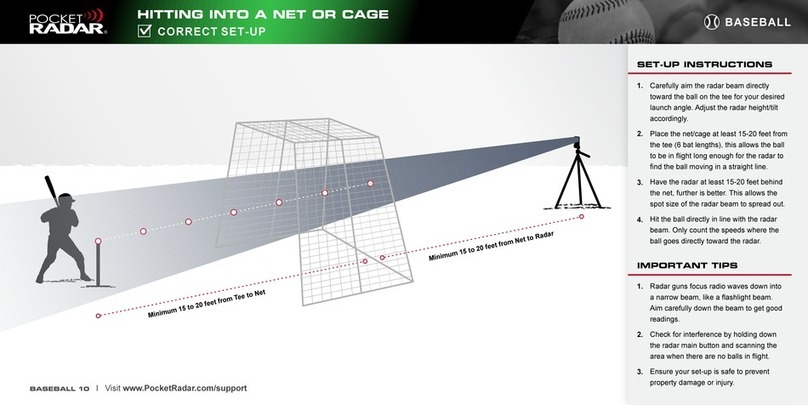
Pocket Radar
Pocket Radar HITTING INTO A NET OR CAGE quick start guide
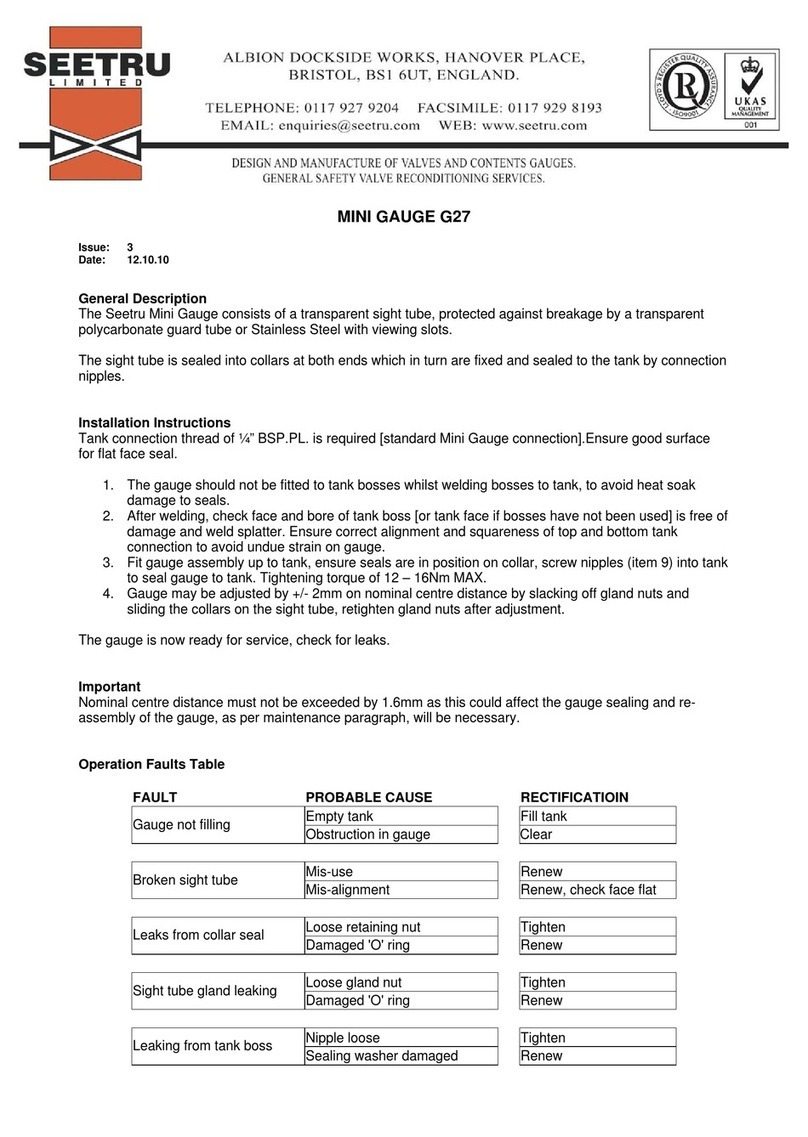
Seetru
Seetru G27 instructions
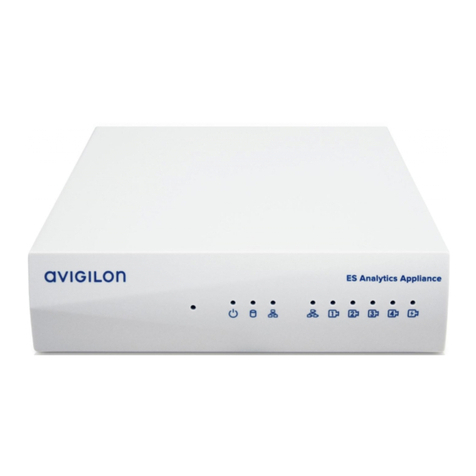
Avigilon
Avigilon ACC VMA-RPA-4P2 user guide
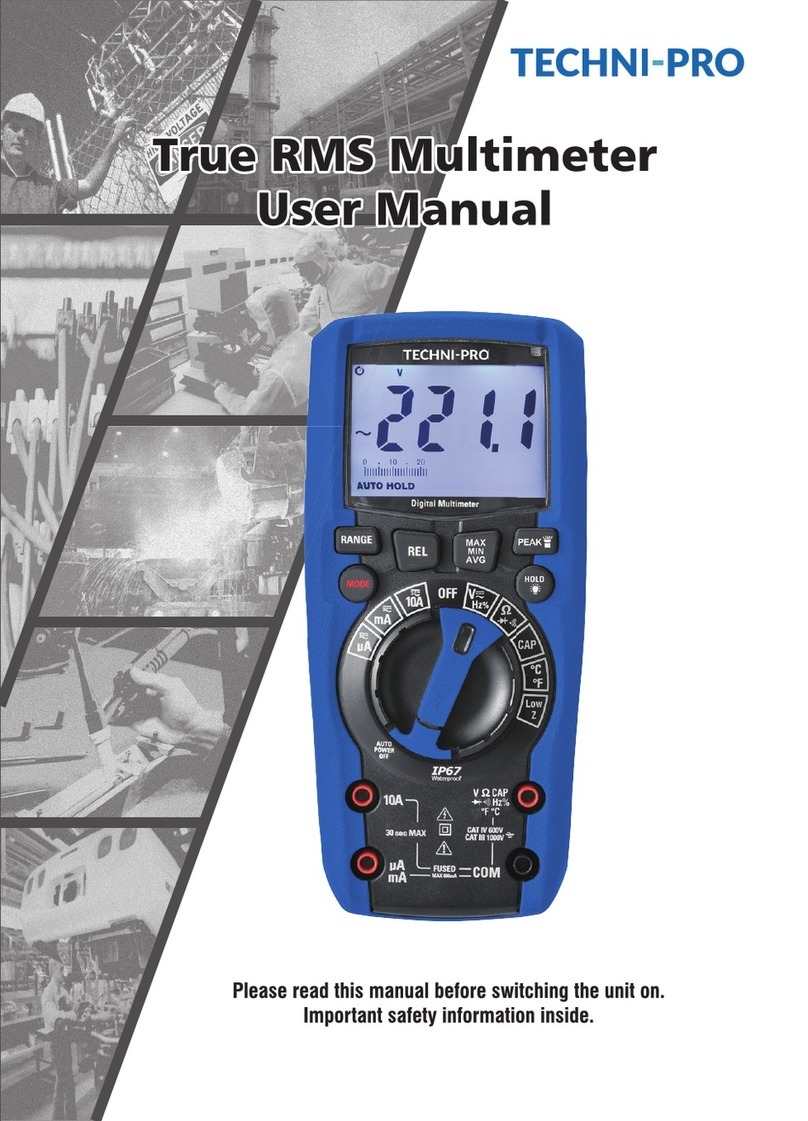
TECHNI-PRO
TECHNI-PRO TNP218 user manual

